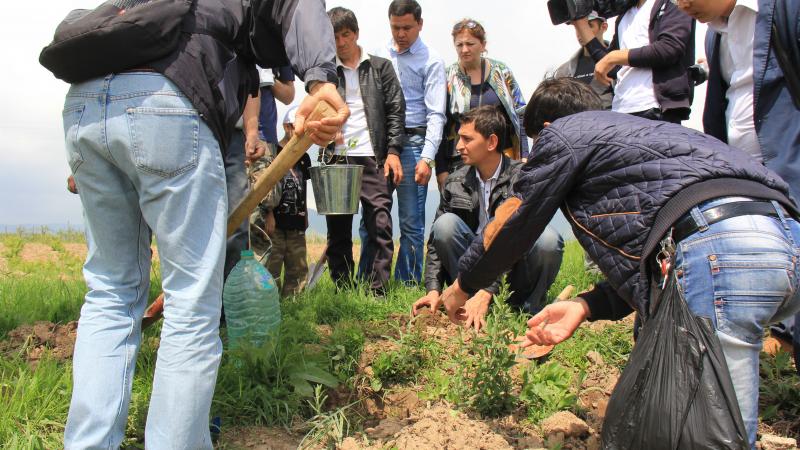Pistachio planting on Earth Day in Uzbekistan

On the occasion of World Earth Day, ICARDA-led Knowledge Management in Central Asian Countries Initiative for Land Management Phase II project (CACILM II), funded by the International Fund for Agricultural Development (IFAD), organized a pistachio tree planting event on 23rd April in Bostanlyk district of Tashkent region, Uzbekistan.
Over 60 participants including farmers, parliament deputies, representatives from NGOs, young people and media personnel participated in planting over 300 seedlings of pistachios on 1.5 hectares of land at a local farm, located at an altitude of 650-1200 m above sea level, where the climatic conditions are suitable for industrial plantations of pistachio.
"The purpose of this event, held in cooperation with partner organizations, was to demonstrate and implement research outputs of the project and promote alternative options of crop cultivation in highlands," said Dr. Akmal Akramkhanov, coordinator of the Knowledge Management project.
“This event follows the round table held in Tashkent in February 2016 on establishing pistachio plantations in the foothills of Uzbekistan, which attracted over 100 farmers, researchers, students and other stakeholders,” he added. This round table was jointly organized by Knowledge Management in CACILM II project with Center of Support of Entrepreneurship and Farming and GEF Small Grants Program.
Pistachio, with its strong root system, is known for its soil and water protection role in the arid foothills and low hills of the Central Asia region, leading to effective and sustainable land use. It also serves as an alternative source of income for farmer households in rural drylands under climate change conditions. Pistachio production holds promising economic advantage for farmers in Uzbekistan since the profit from growing pistachios is estimated to be 28 times larger than that of the cultivation of peas, 9 times greater than that of melons and 50 times greater than that of wheat.
